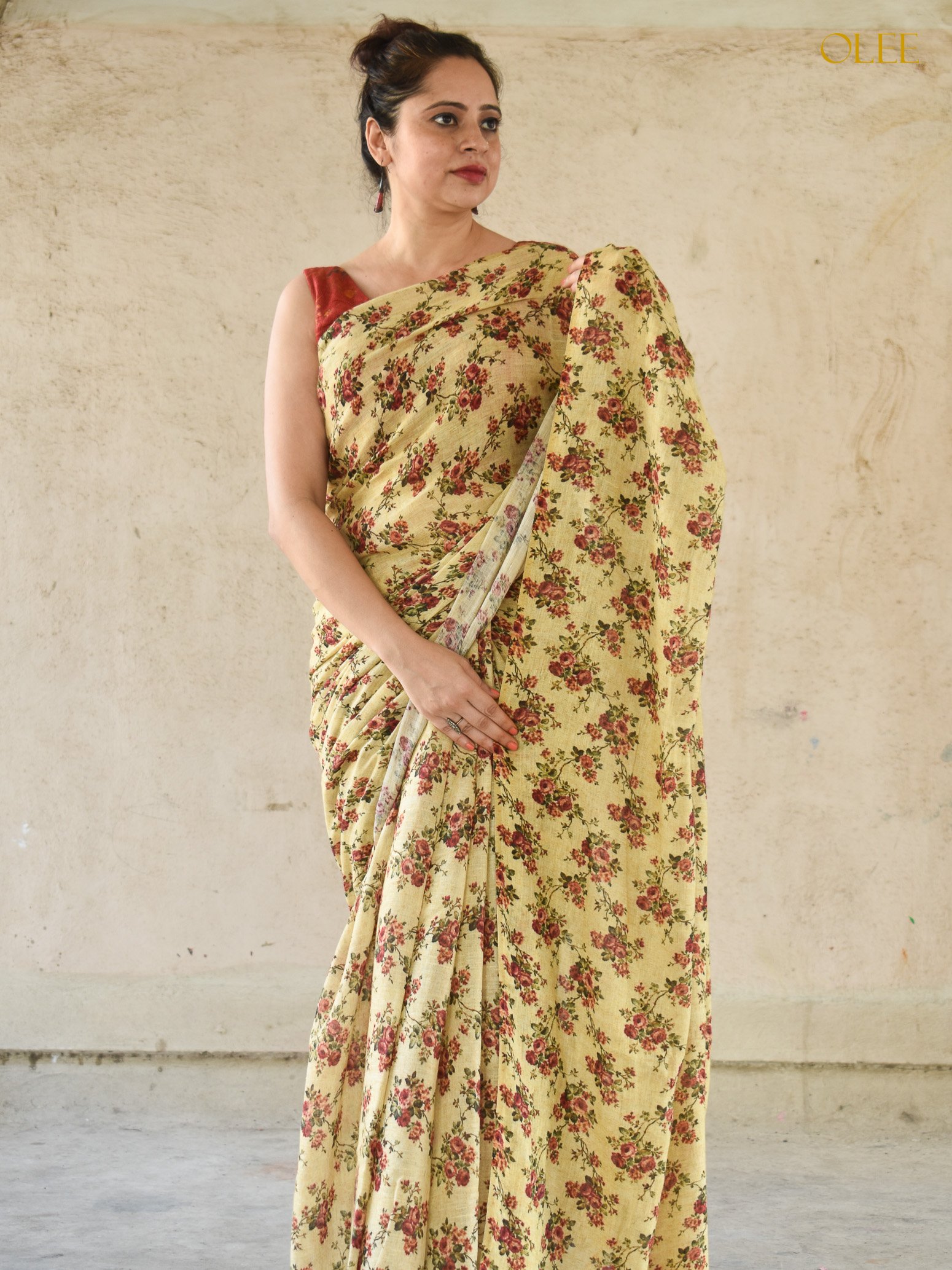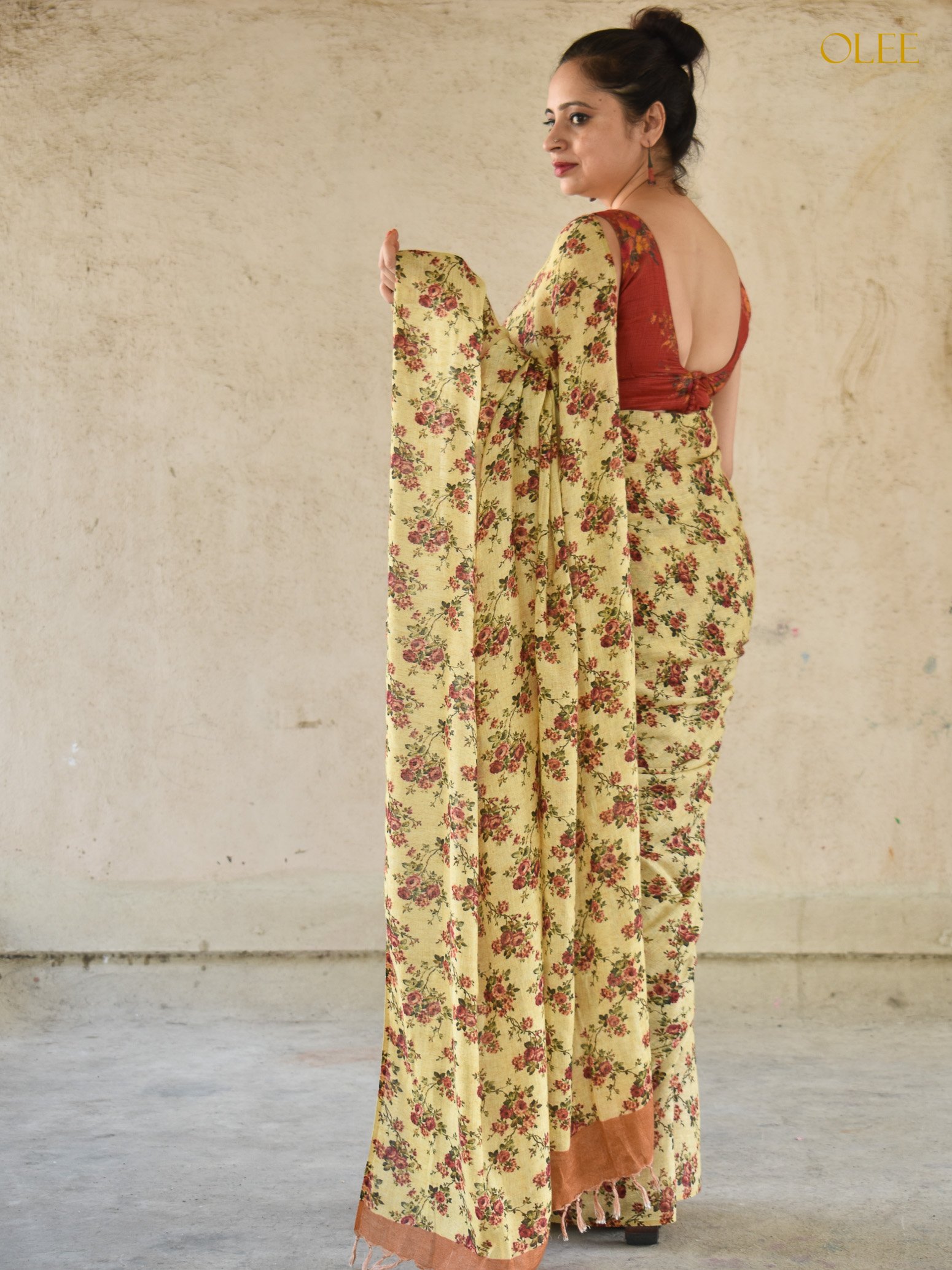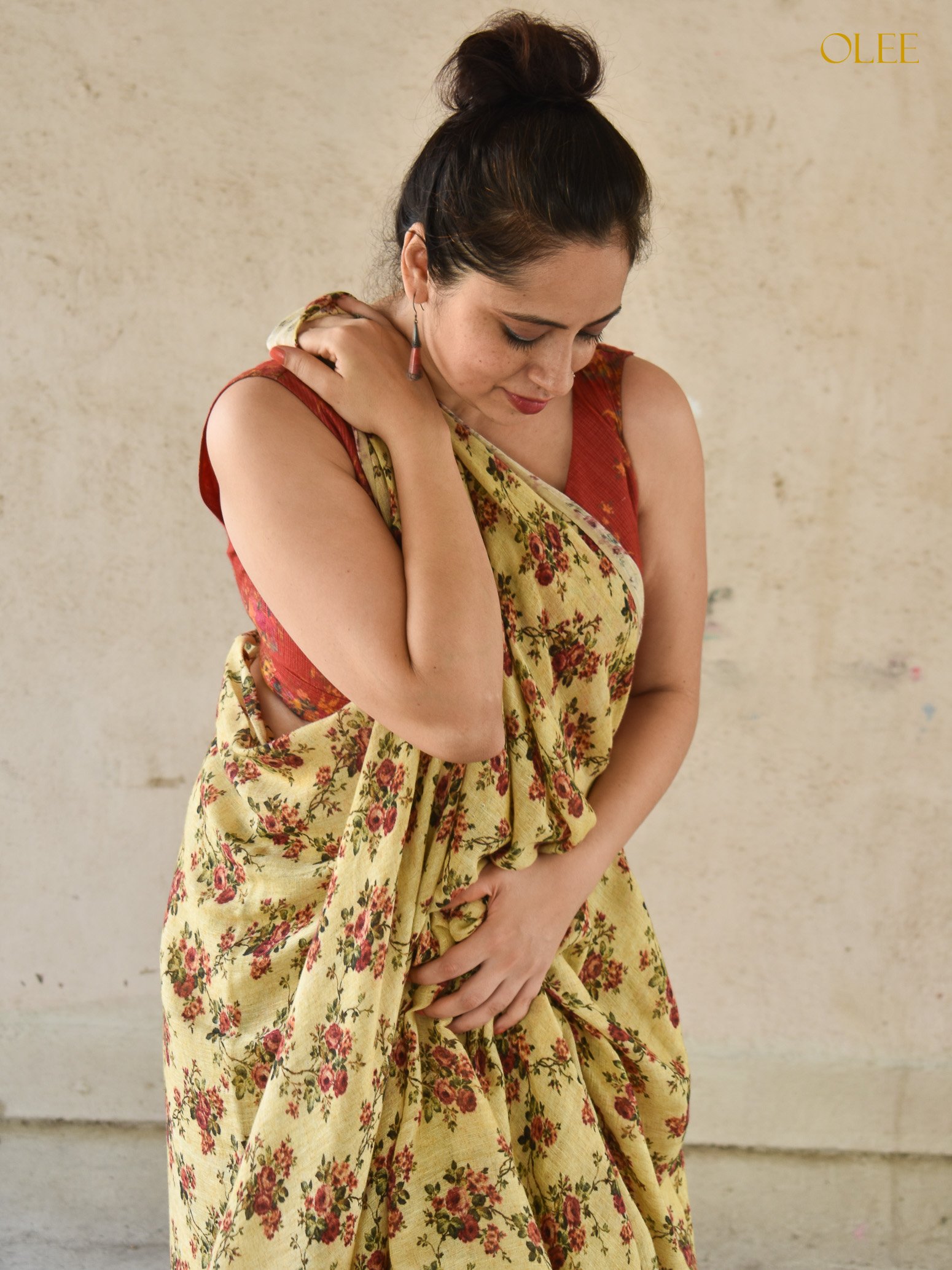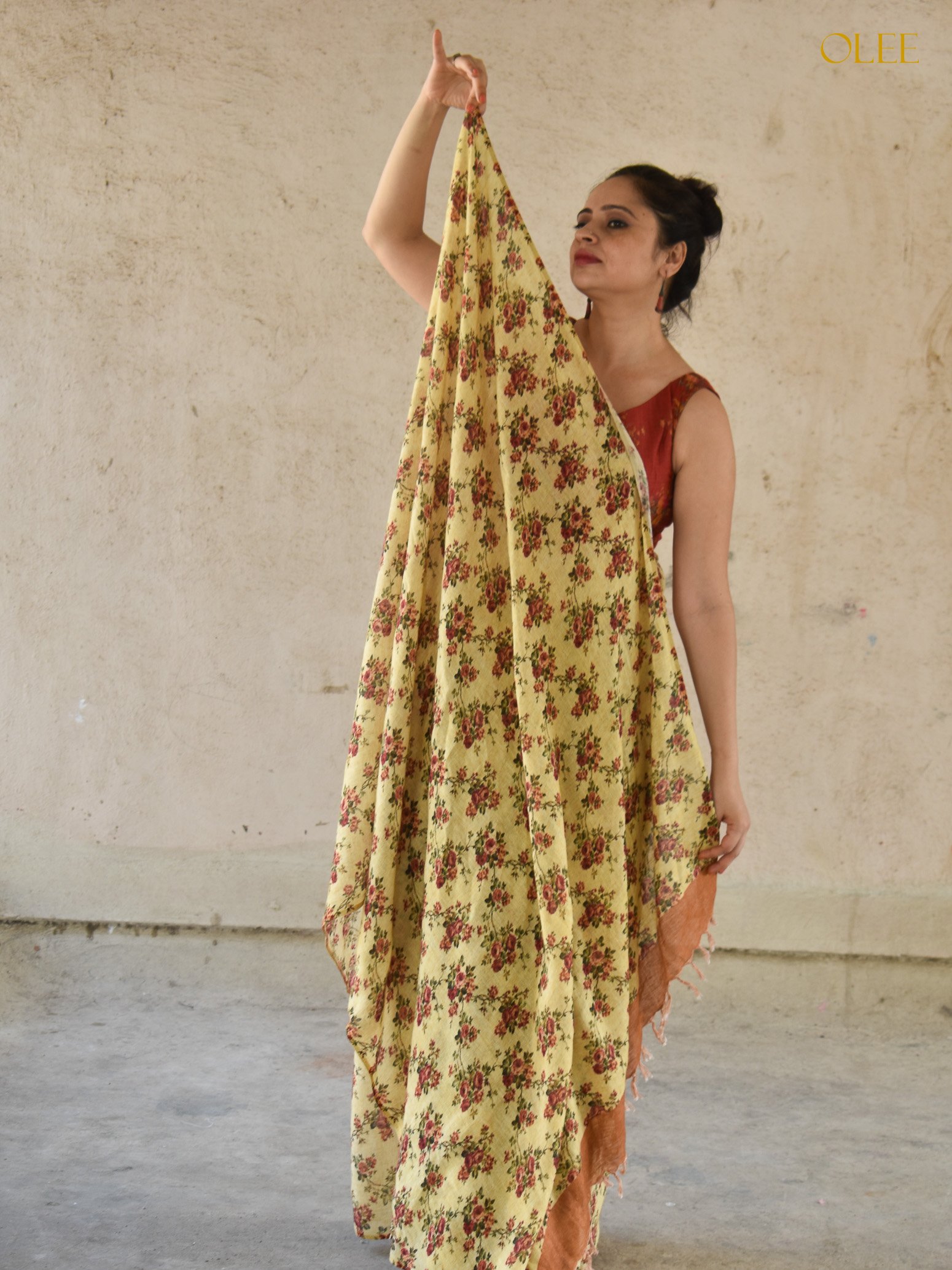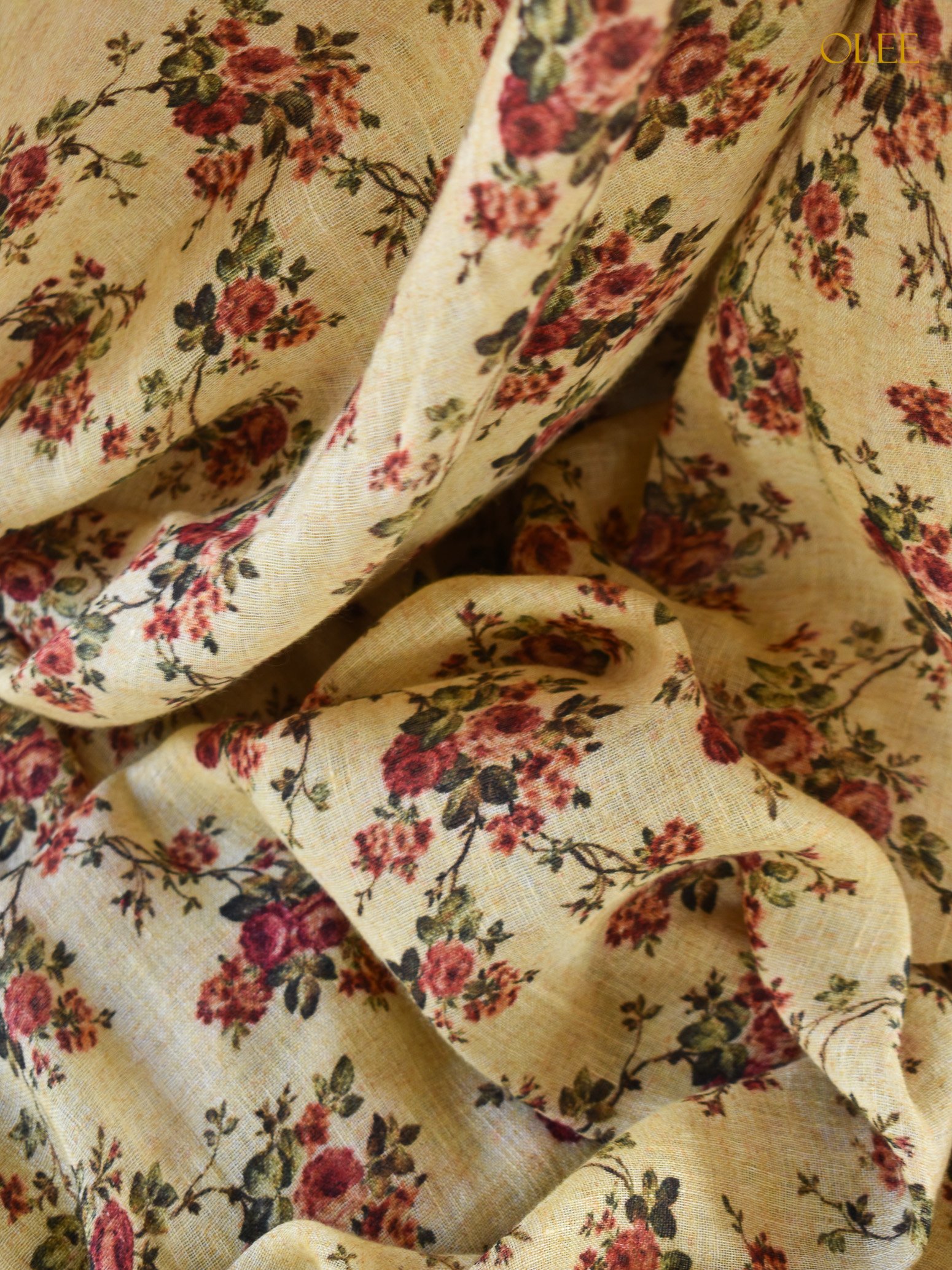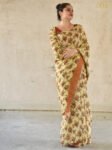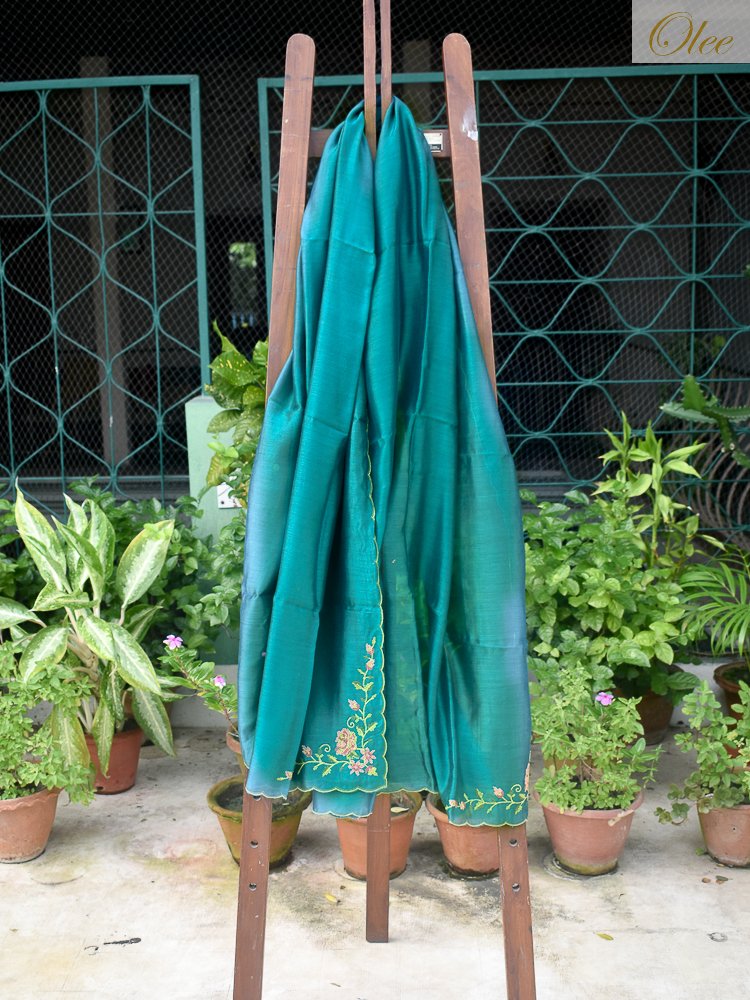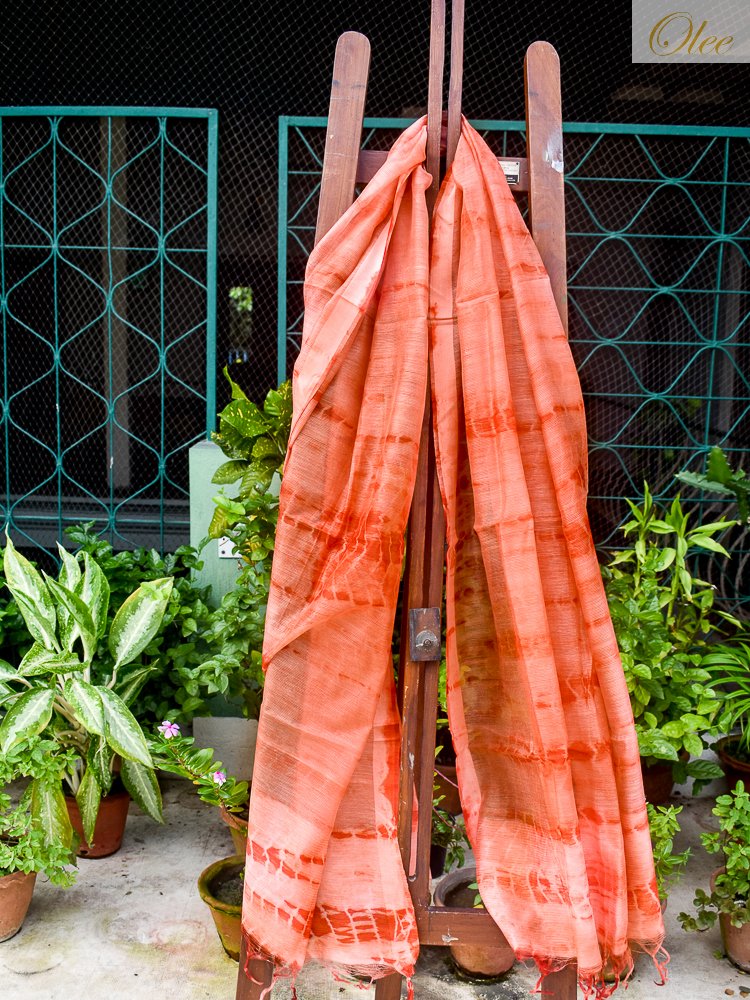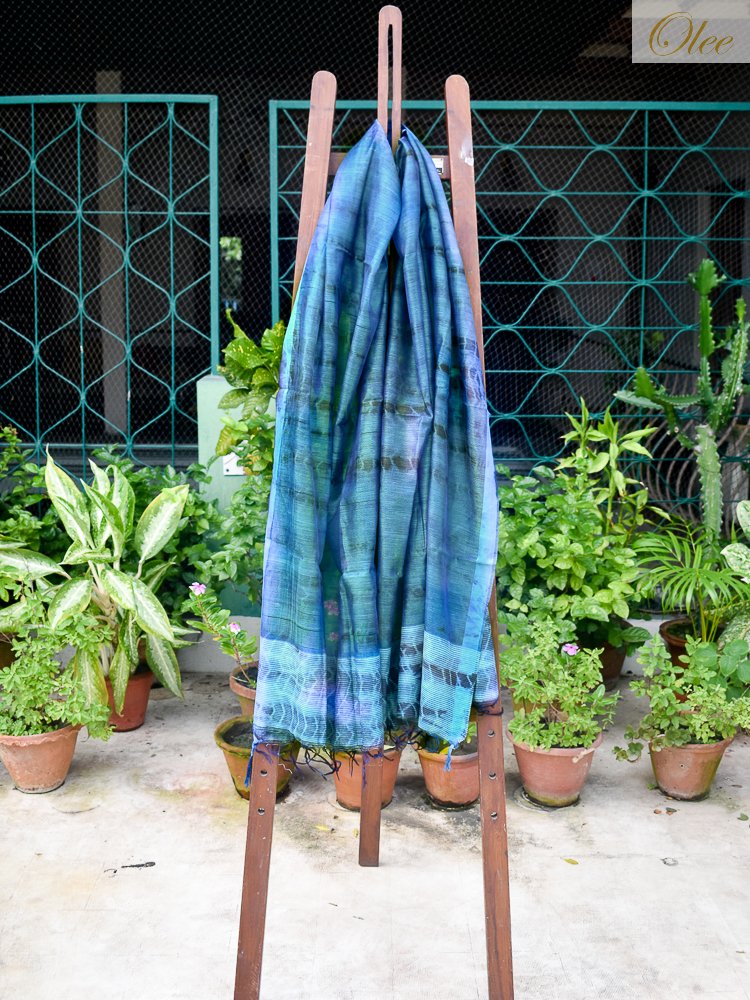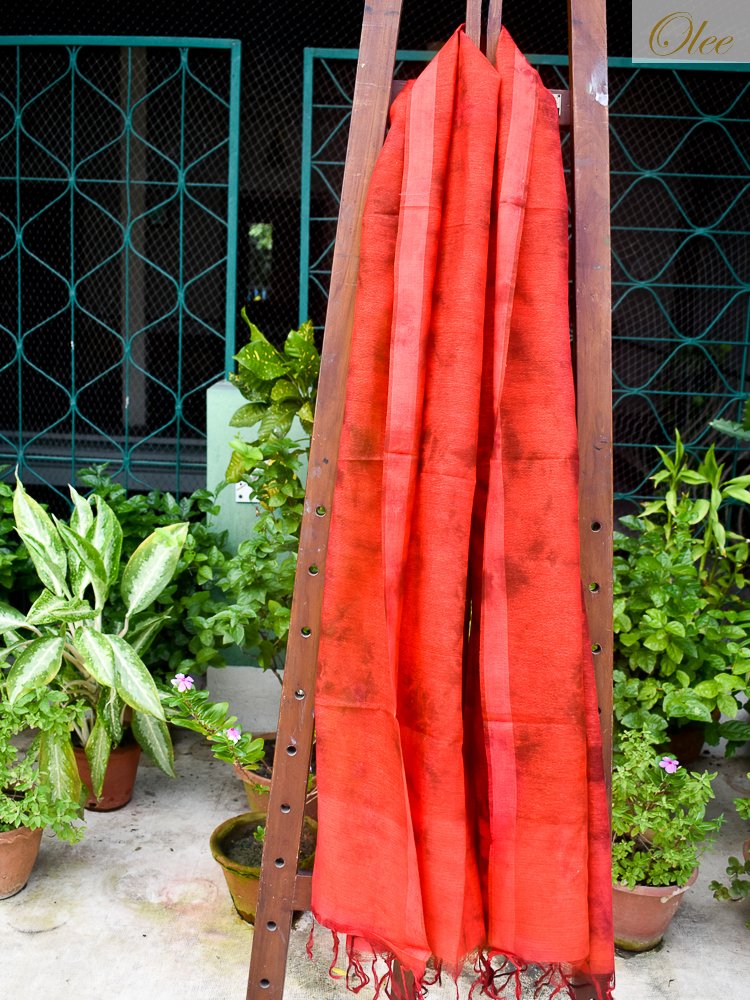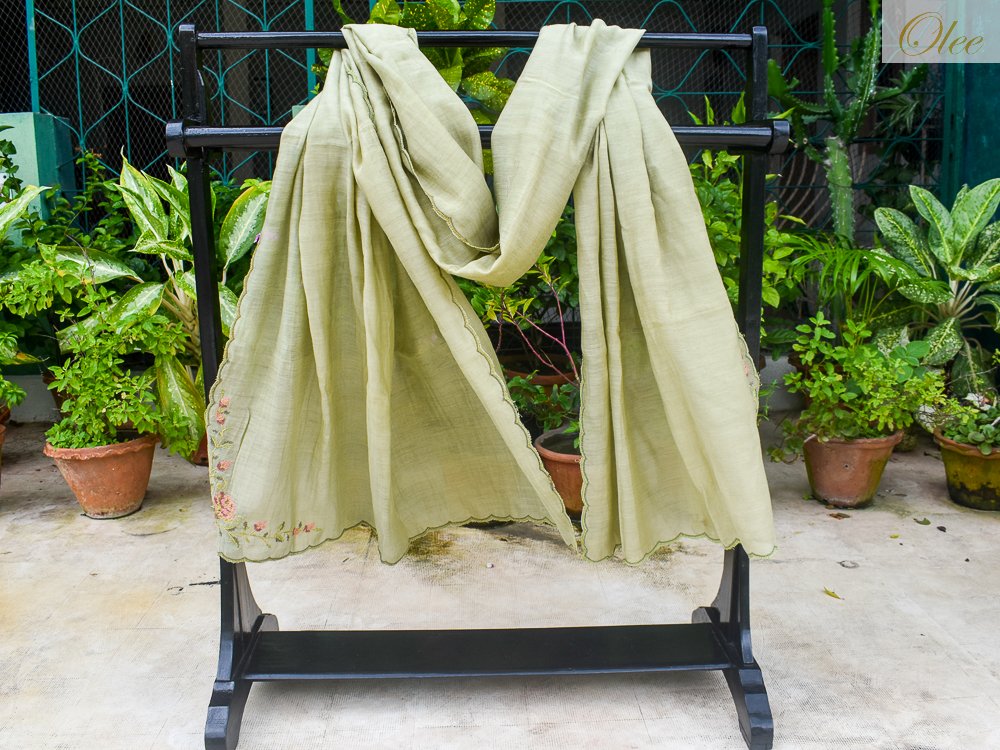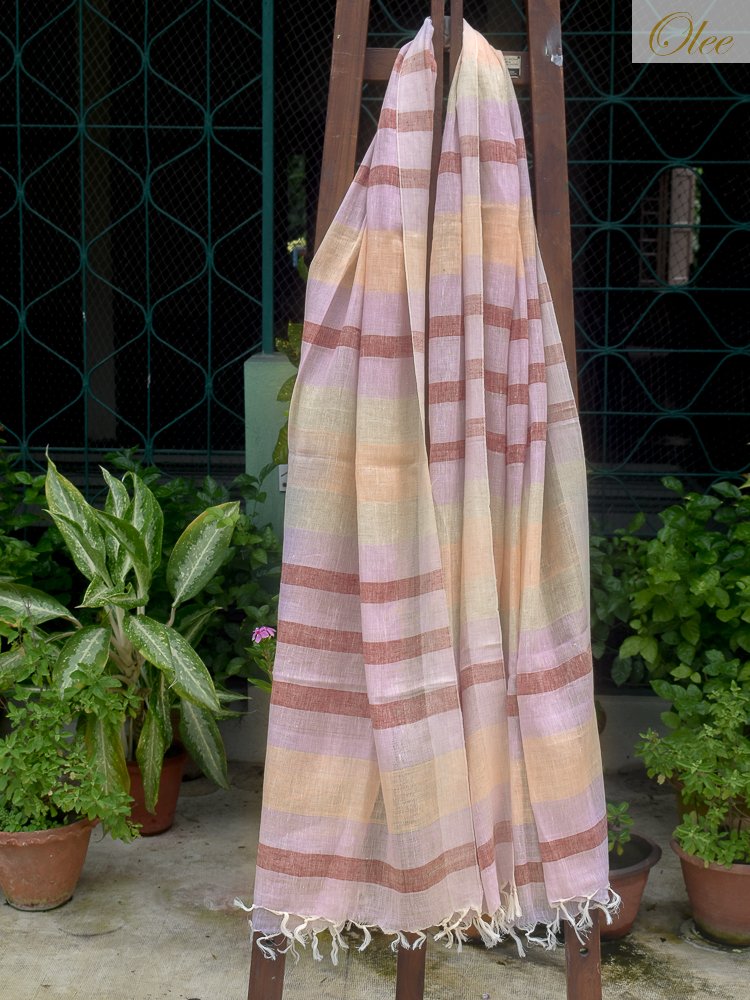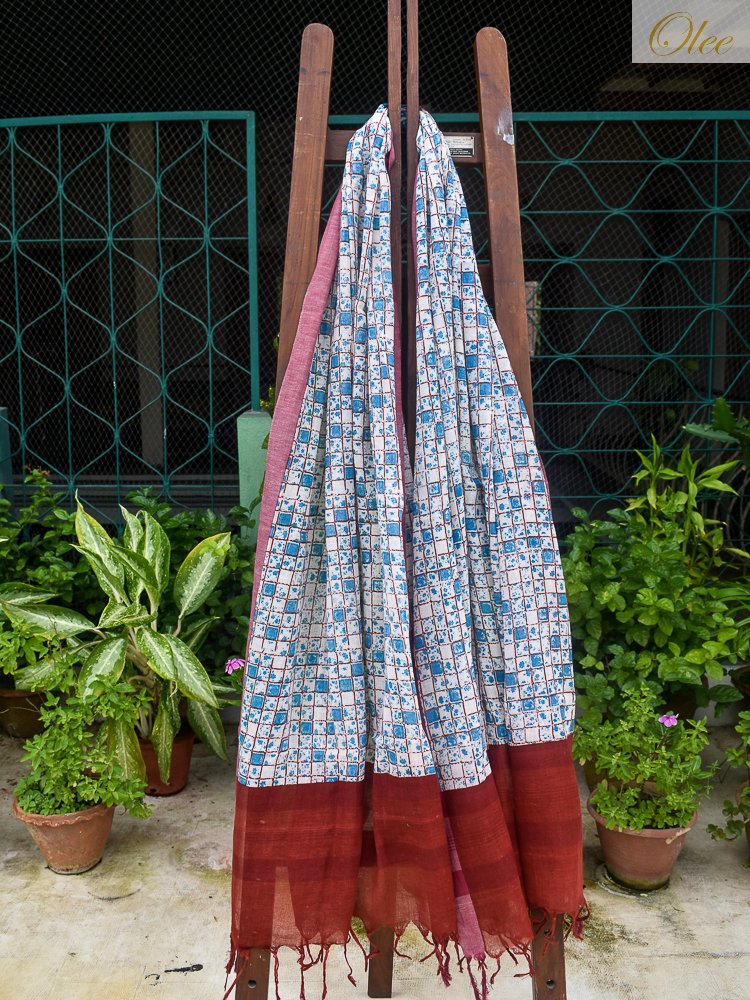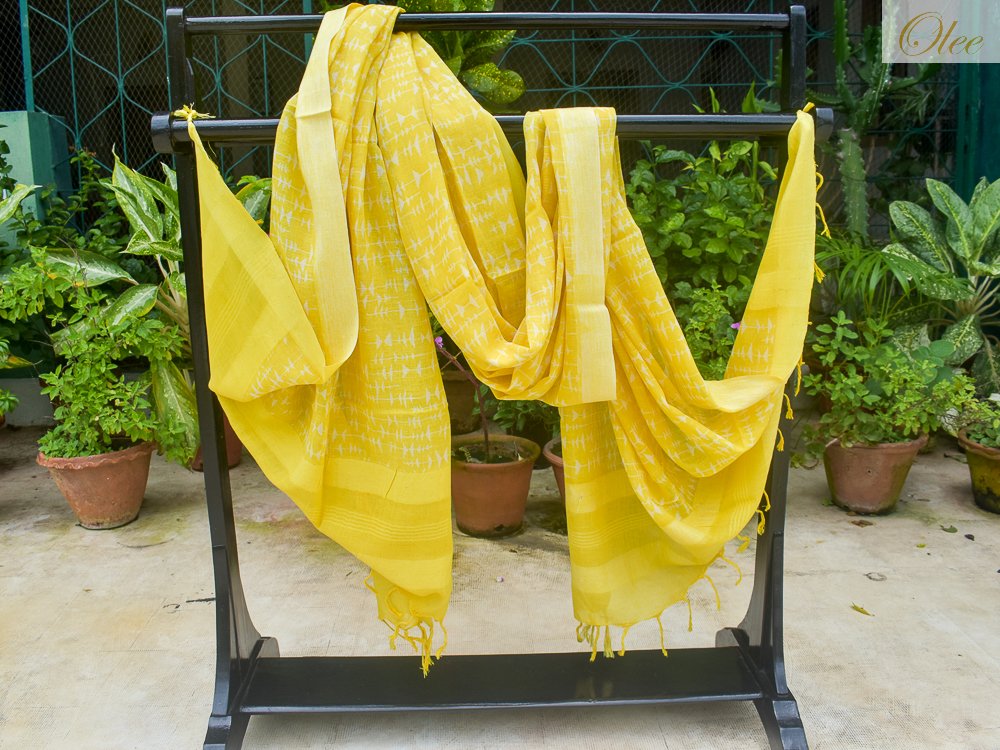Inspiration
On either side the wild roses, their red hot faces turned to the sun, tumbled over the fences, sprawled on the ground and filled the air with their pure summery scent.I am going to give you a handful of these wild roses, so, each petal that falls will remind you that the earth breathes and the moon rises.
The flowing floral linen is just good for any occasion. You become a rose in the garden of gods.
Details
Length: 5.5 m; Width: 47 inches
Blouse Piece: Included with the saree of length 90-100 cm. The blouse worn in the photographs is only for styling.
Maintenance: Dry Clean and light iron
Disclaimer: The pictures are clicked in natural light. Colour may vary slightly from the image. Since these products are purely hand worked, there may be variations in the weave, colours and prints. Please accept them as beauty of a hand-made product.
Description
Fabric:
The fabric is a pure linen weave with a thread count of 80 by 100. Linen is a textile made from the fibers of the flax plant .It is very strong and absorbent, and dries faster than cotton. Linen is hypo-allergenic, highly breathable, structurally sound fibre so products keep their shape and environmentally friendly – less water and chemicals to cultivate. The thread count determines number of thread per square inch of the fabric. Higher the thread count more robust and better the quality of linen .These linen yarns are Belgium linen which is by far the best in the world. The thread count of these linen sarees are higher than the standard thread counts of linen sarees which makes the fabric robust yet flows well due to the high quality yarns.
Printing:
The detailed design and the vibrancy of the shades can only be achieved by quality digital prints.
Digital textile printing begins with the art work. We first create an image either by hand work or directly on the computer and convert it to a digital format. Digital textile printing uses large scale inkjet technology and dye (instead of ink).We first pretreat the fabric with liquid solutions that prepare it to accept the dye and better absorb the color. Then the fabric is fed through the printer, which sprays the dye onto the textile with tiny droplets. The final step is fixing the fabric, a process that ensures the permanency of the design. Depending on the type of textile and type of dye, fixing may involve steam, dry heat, or pressure or all a combination of these processes.


